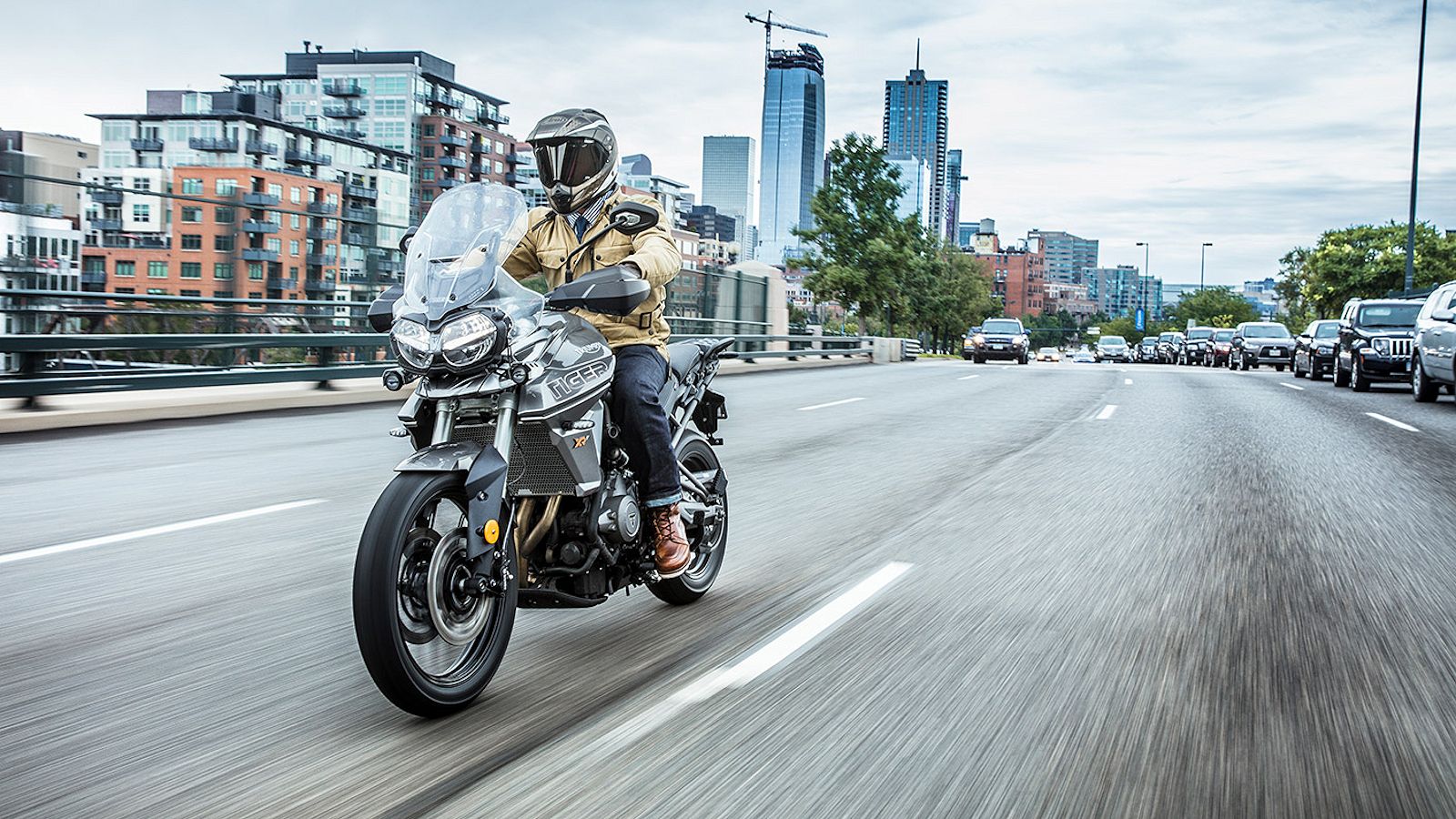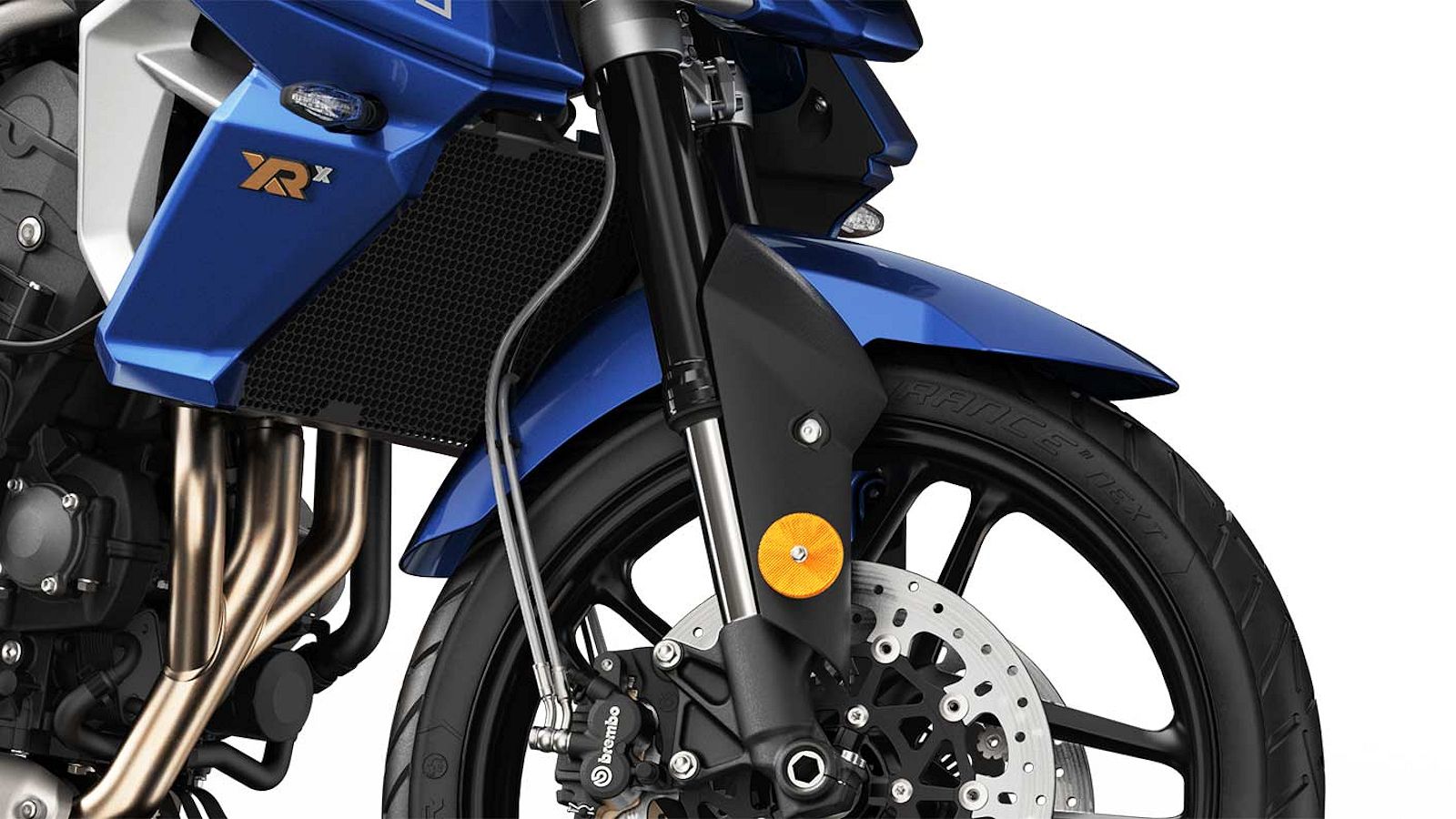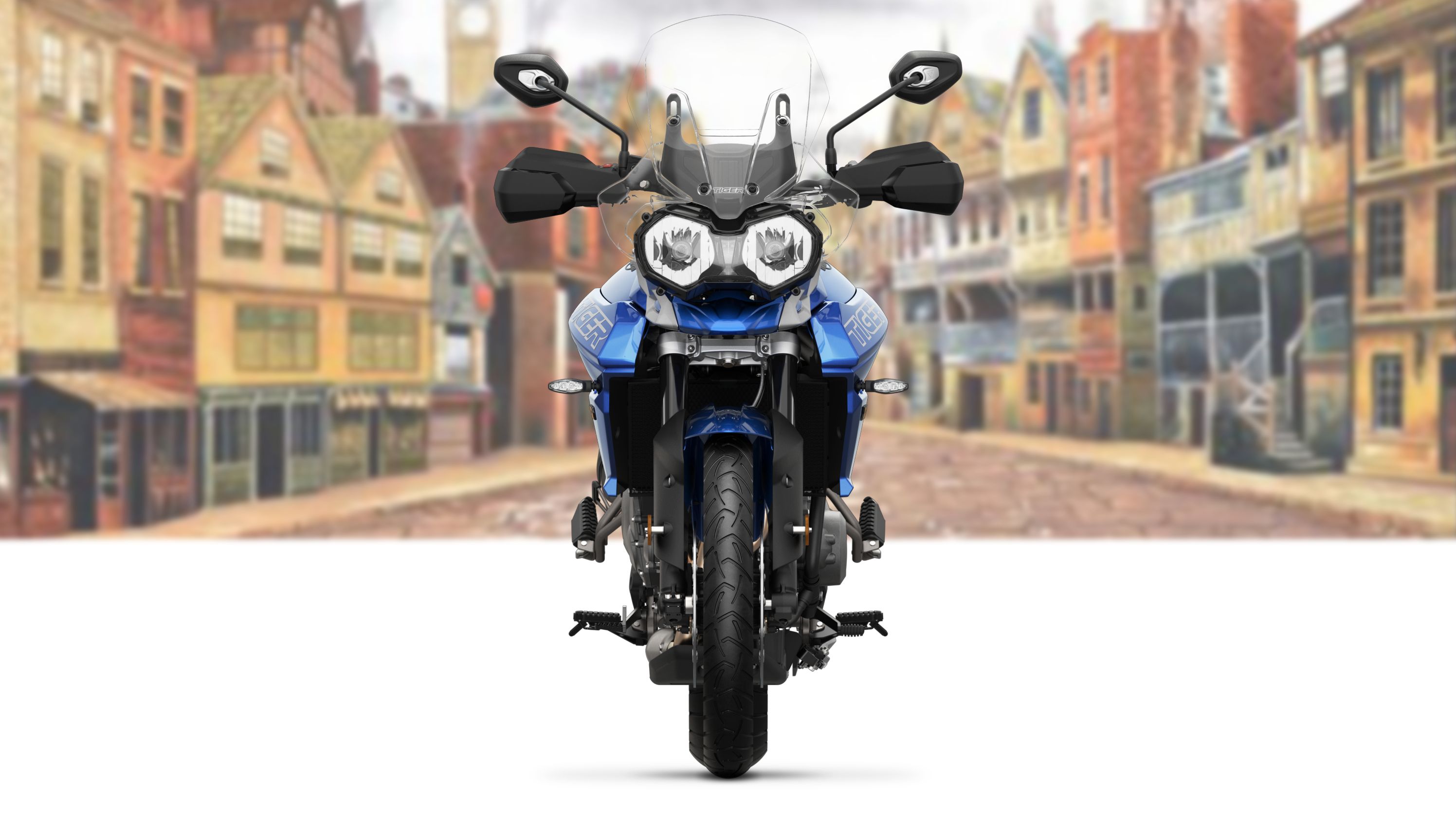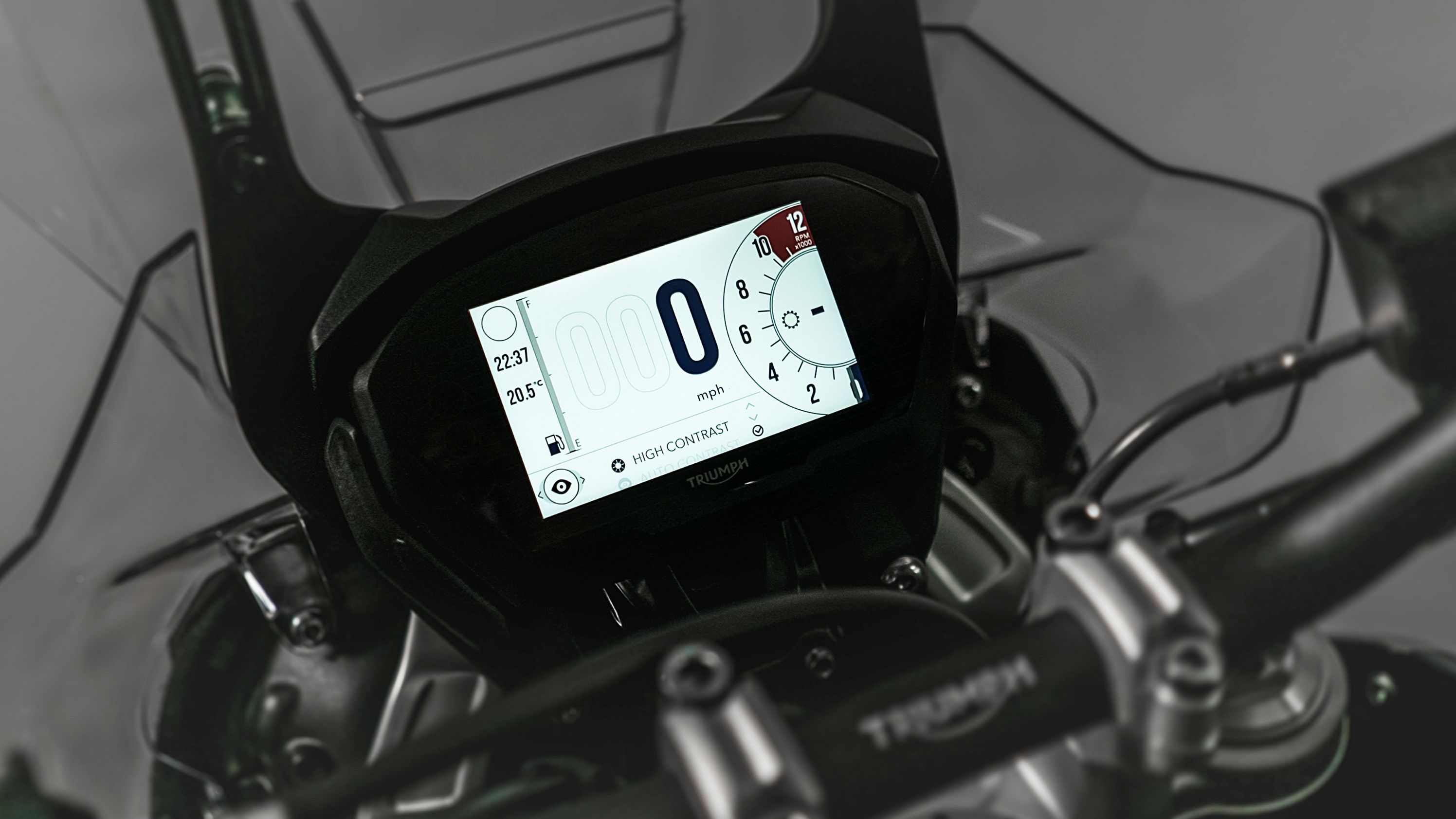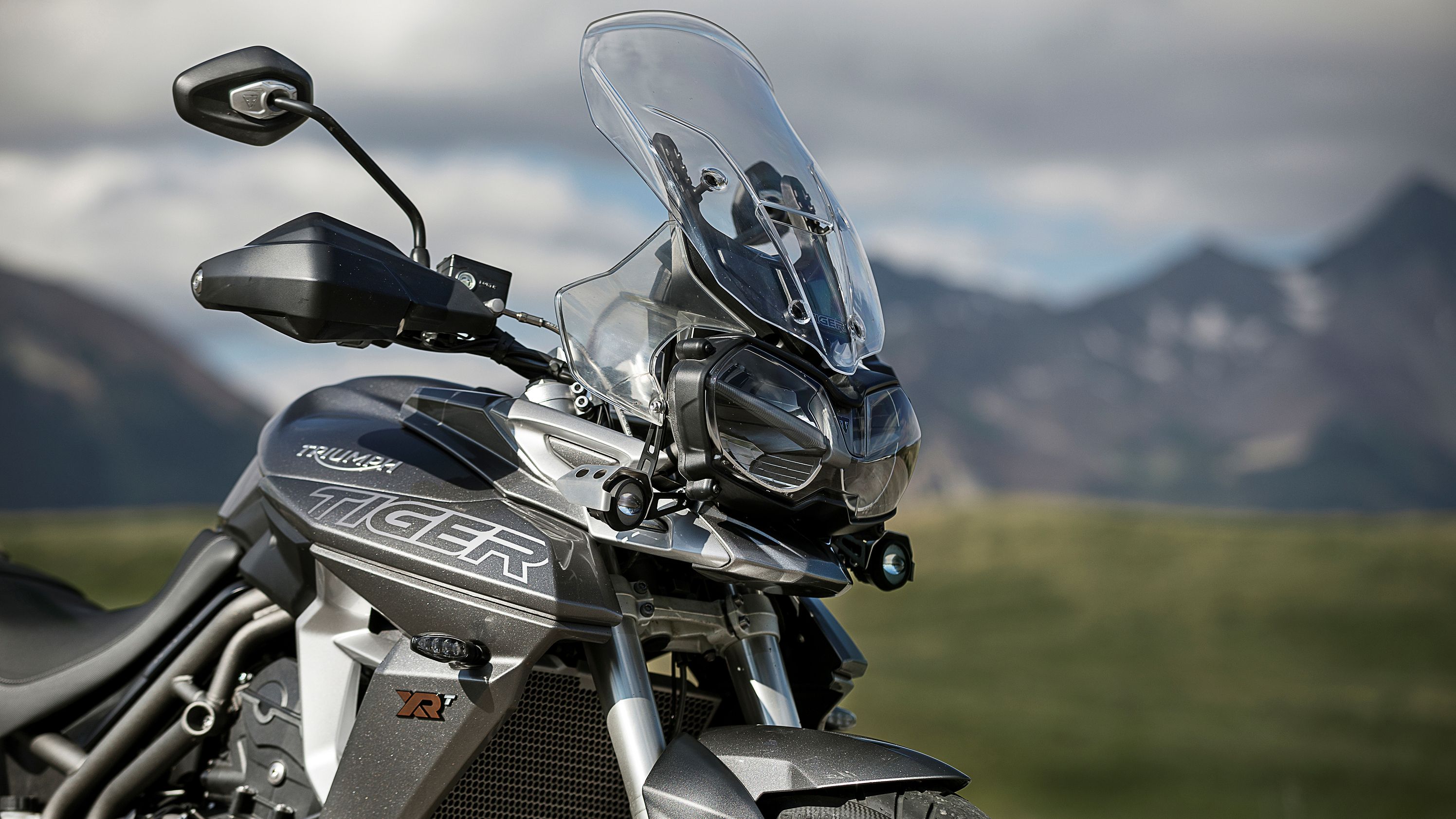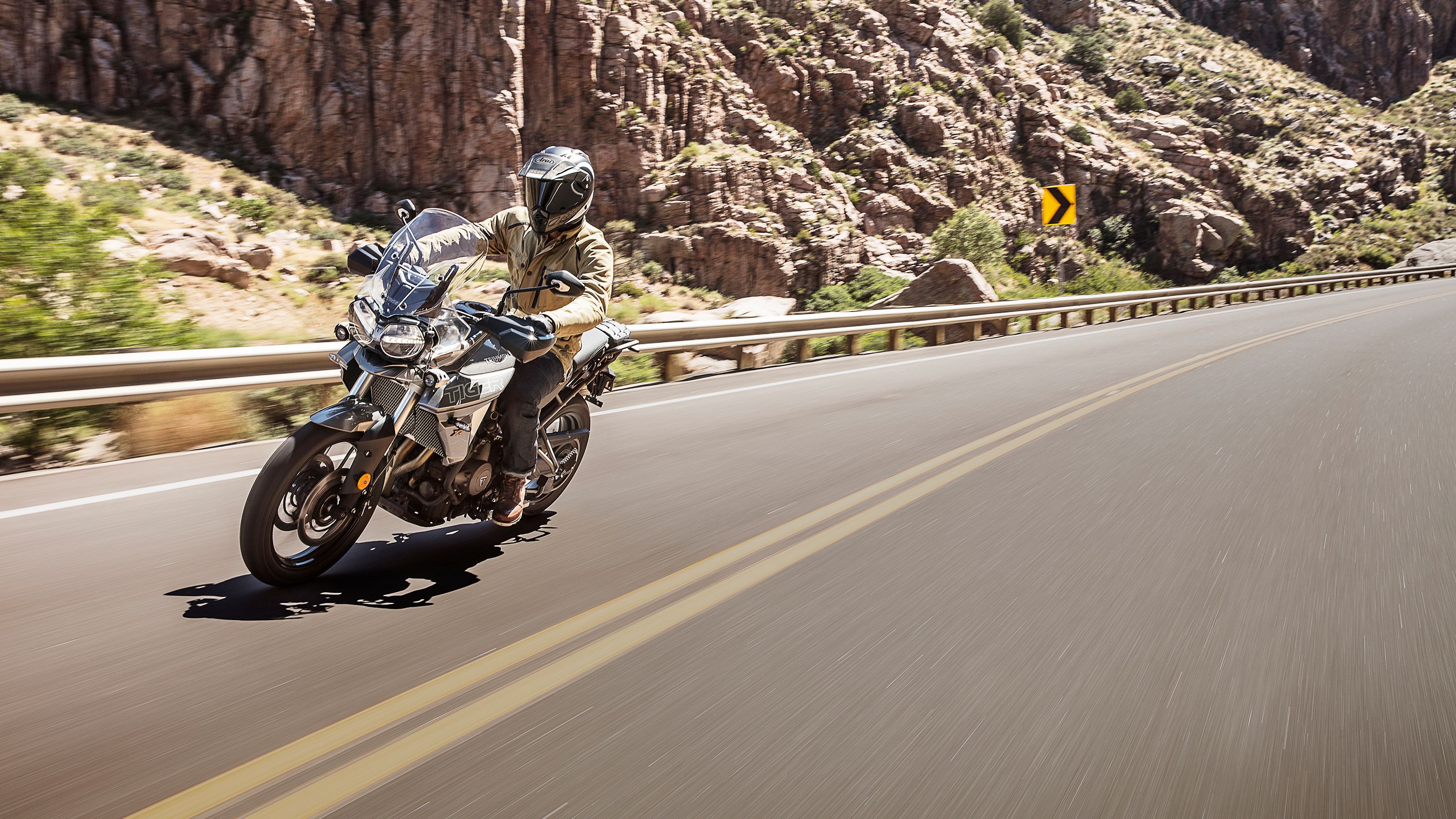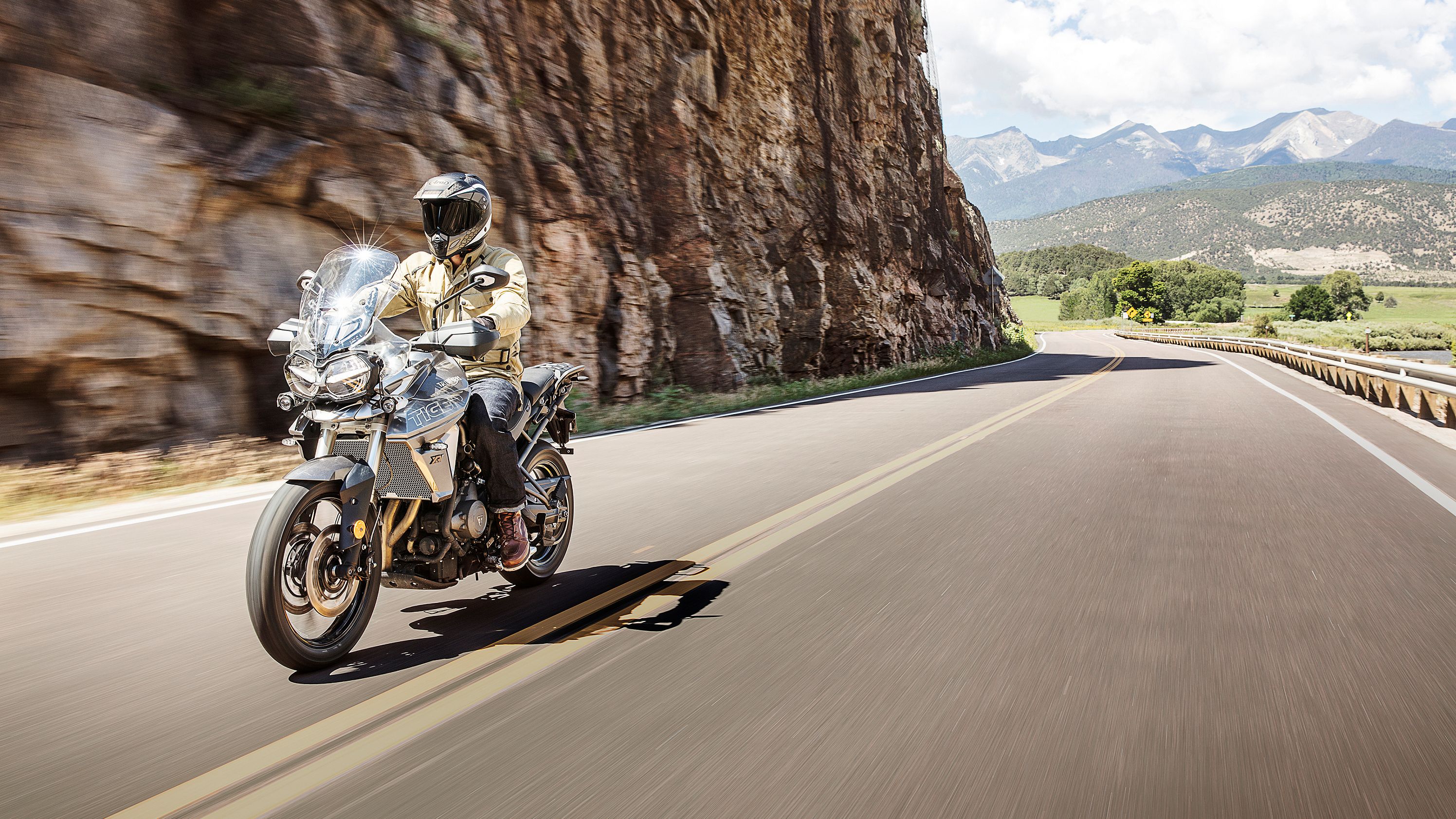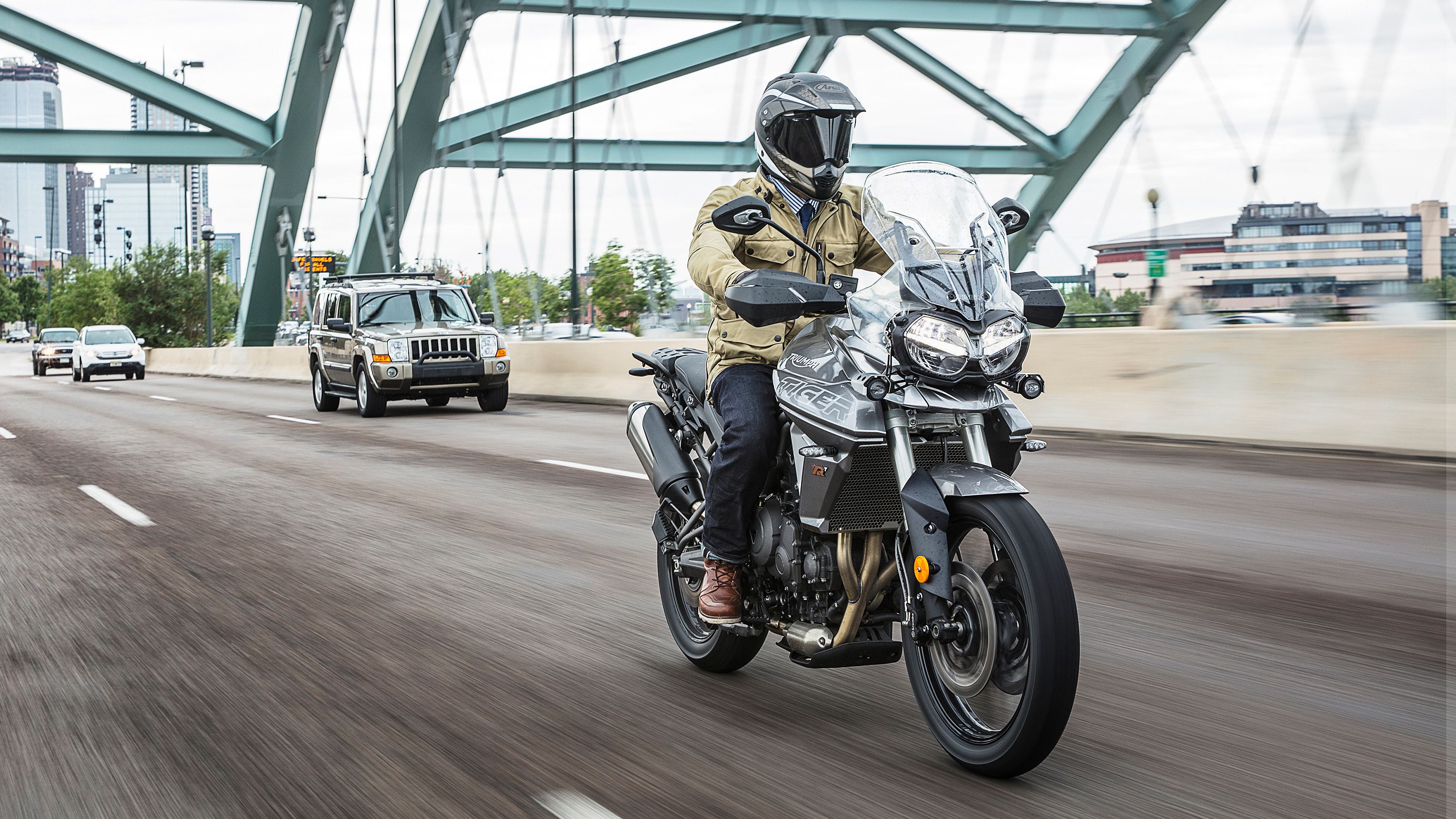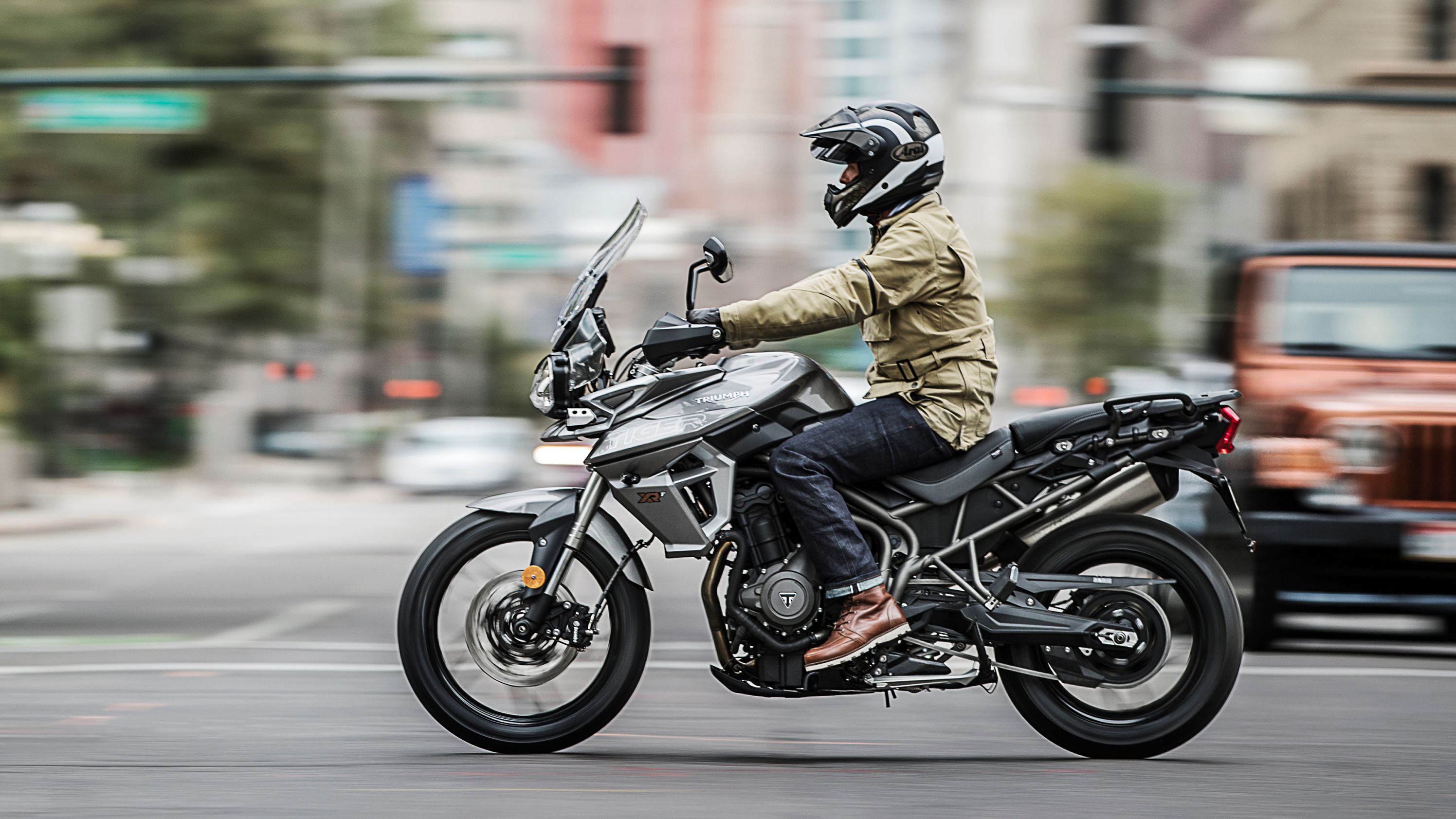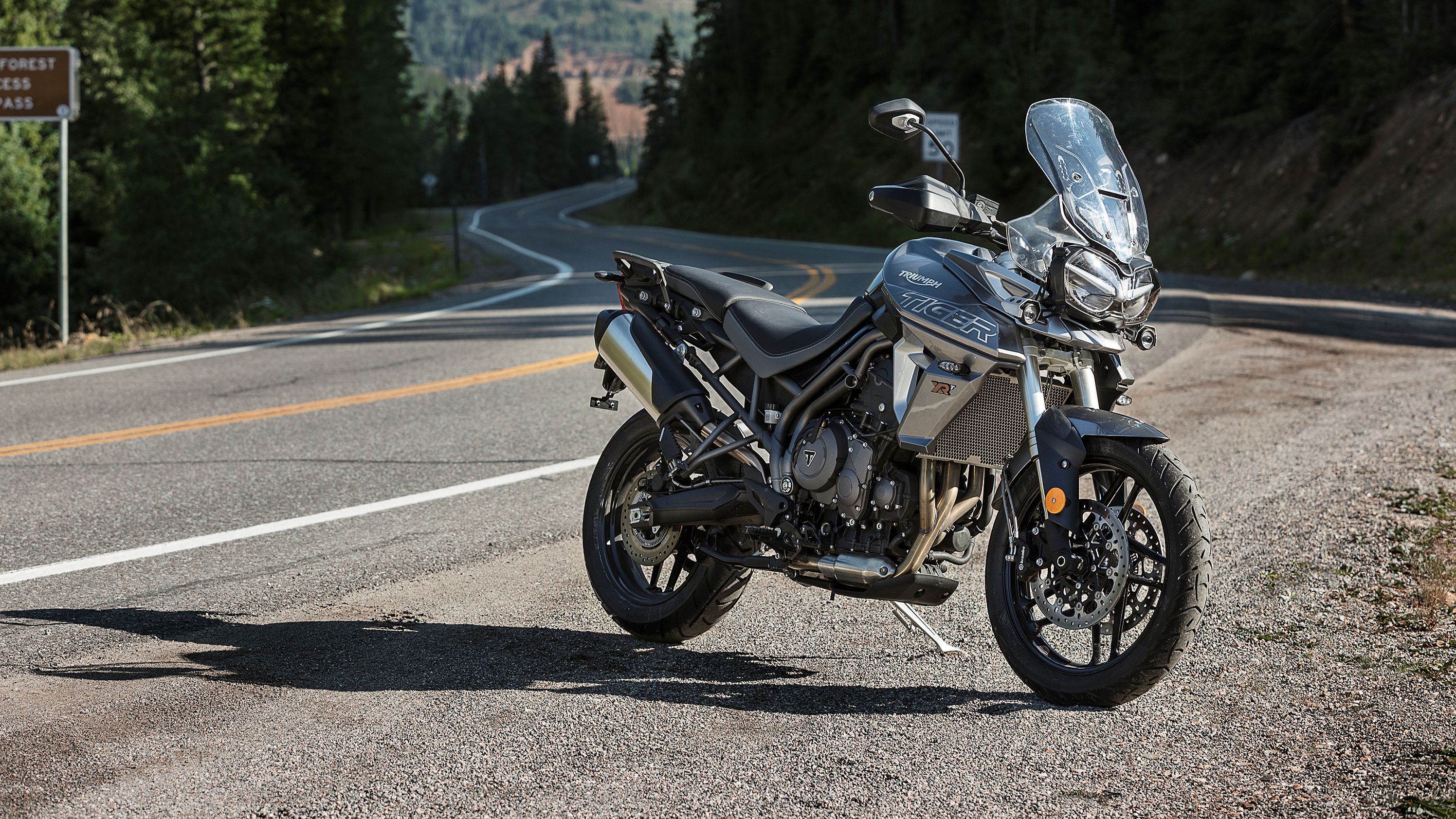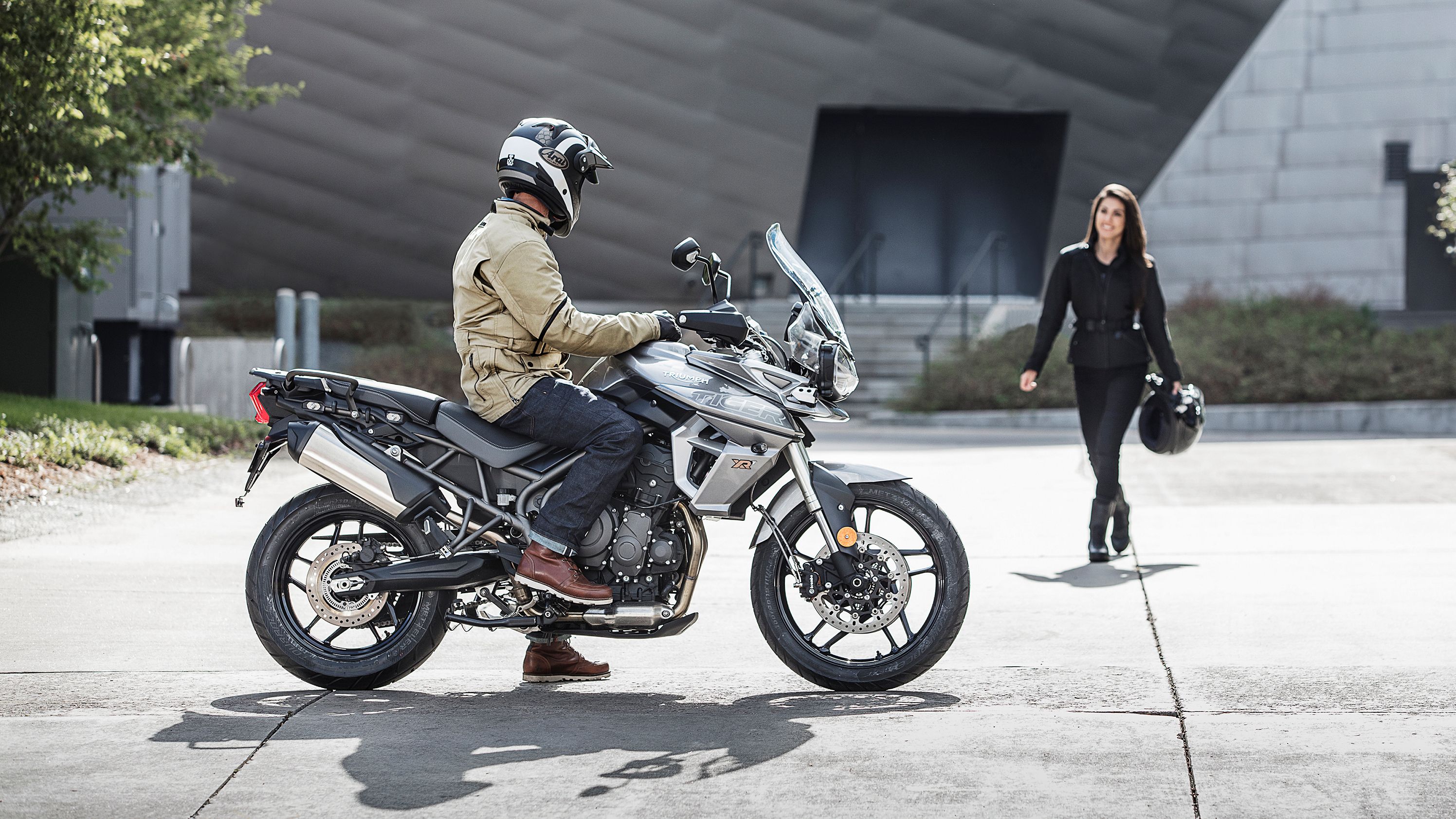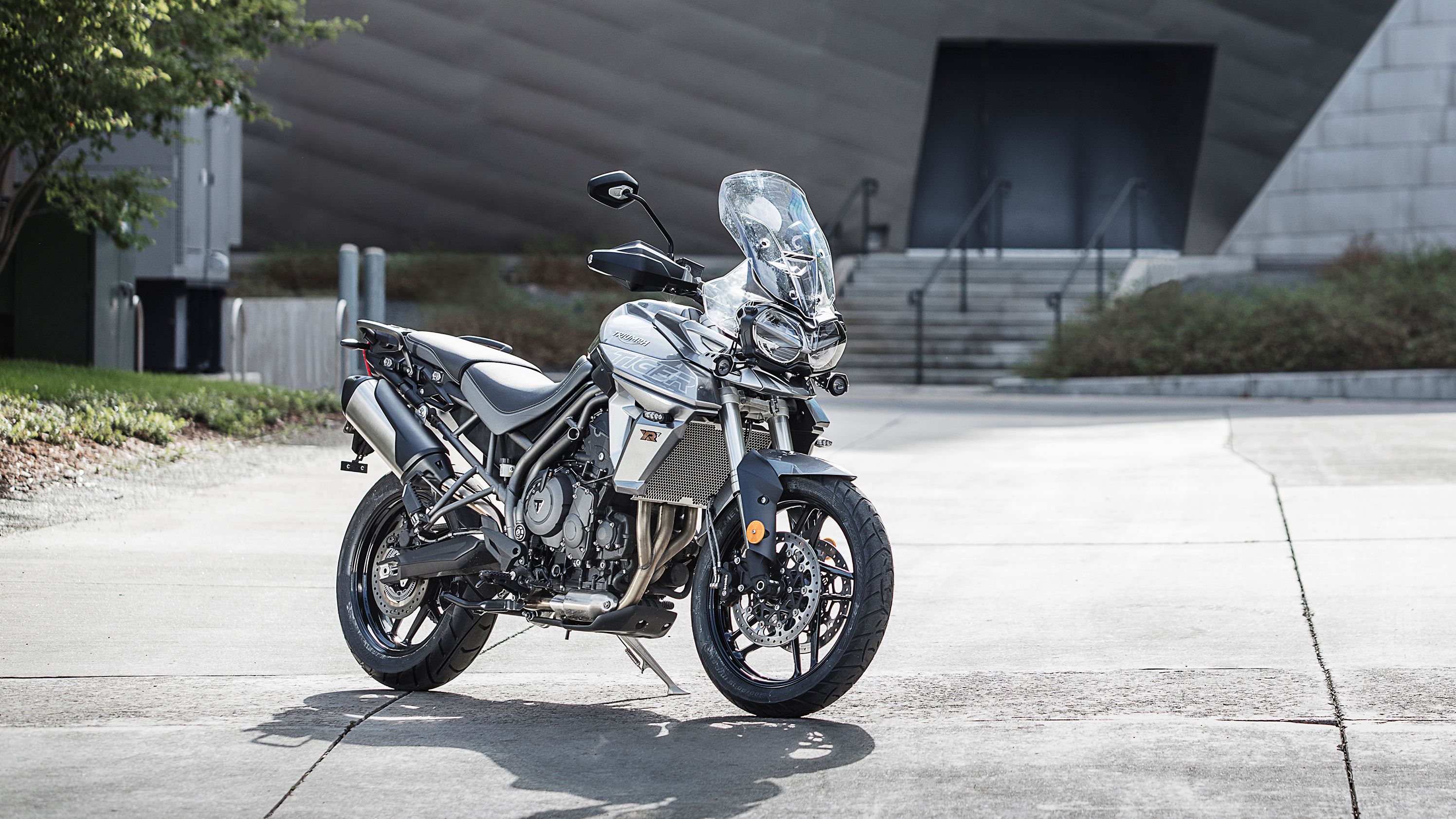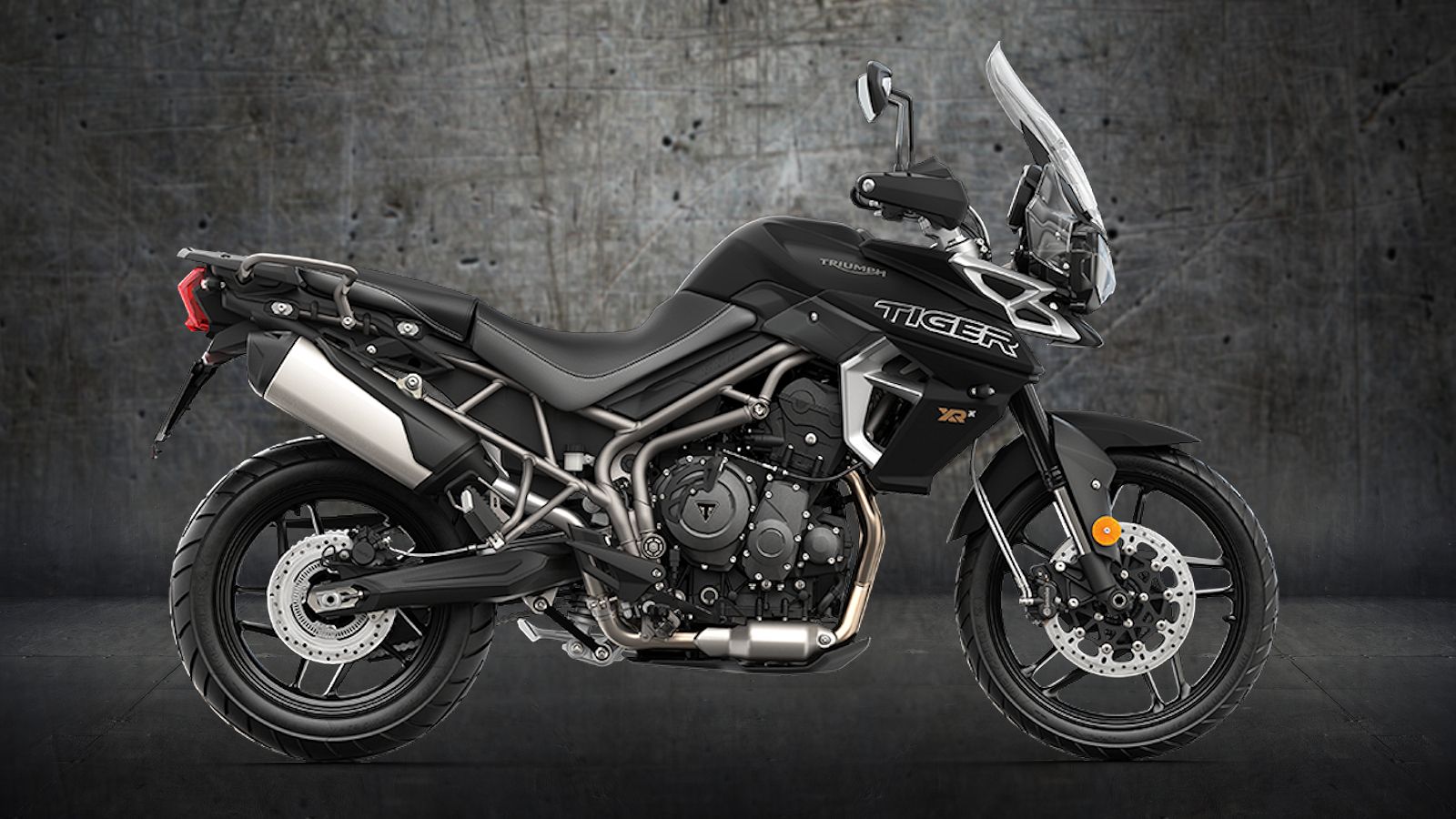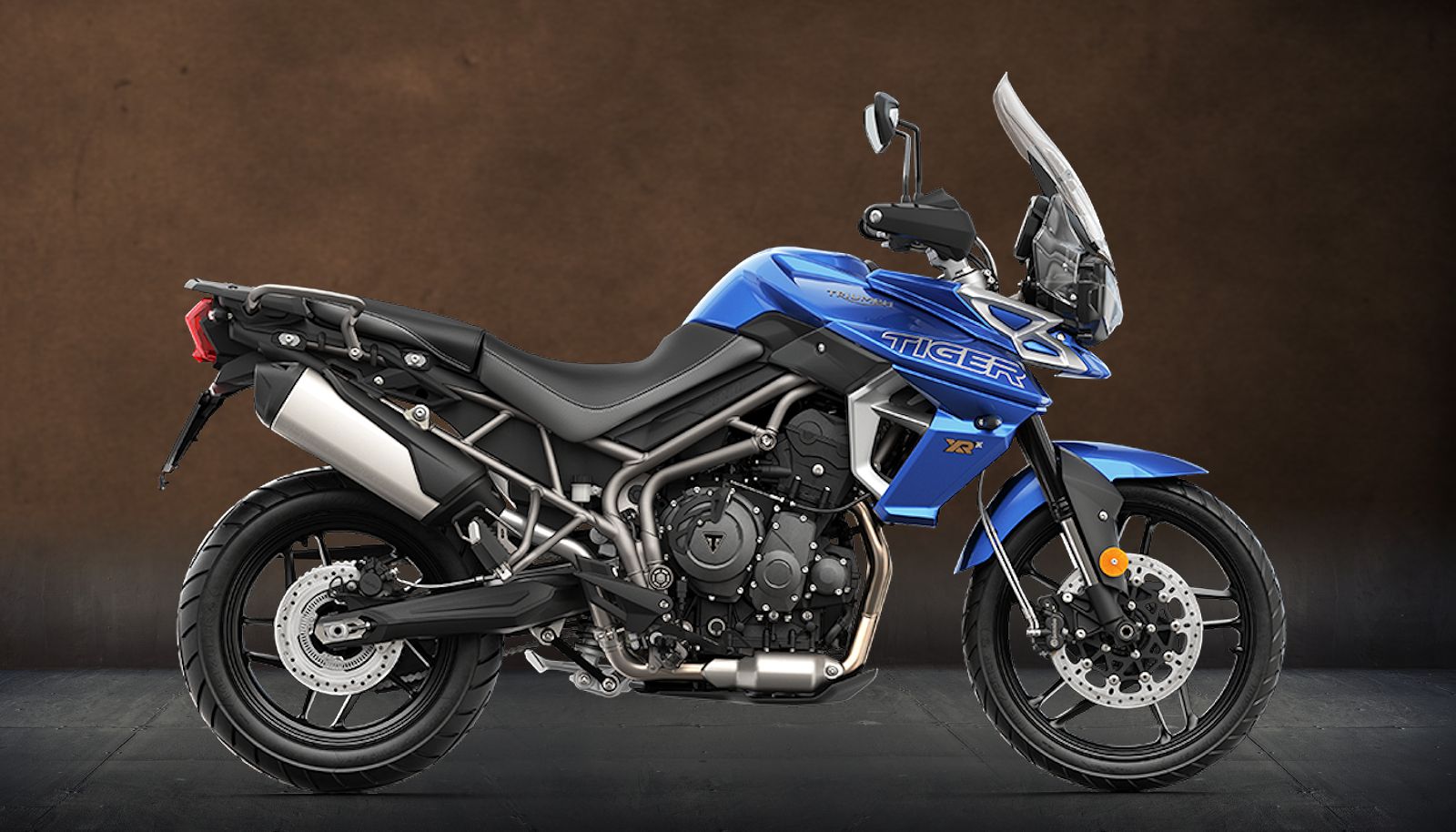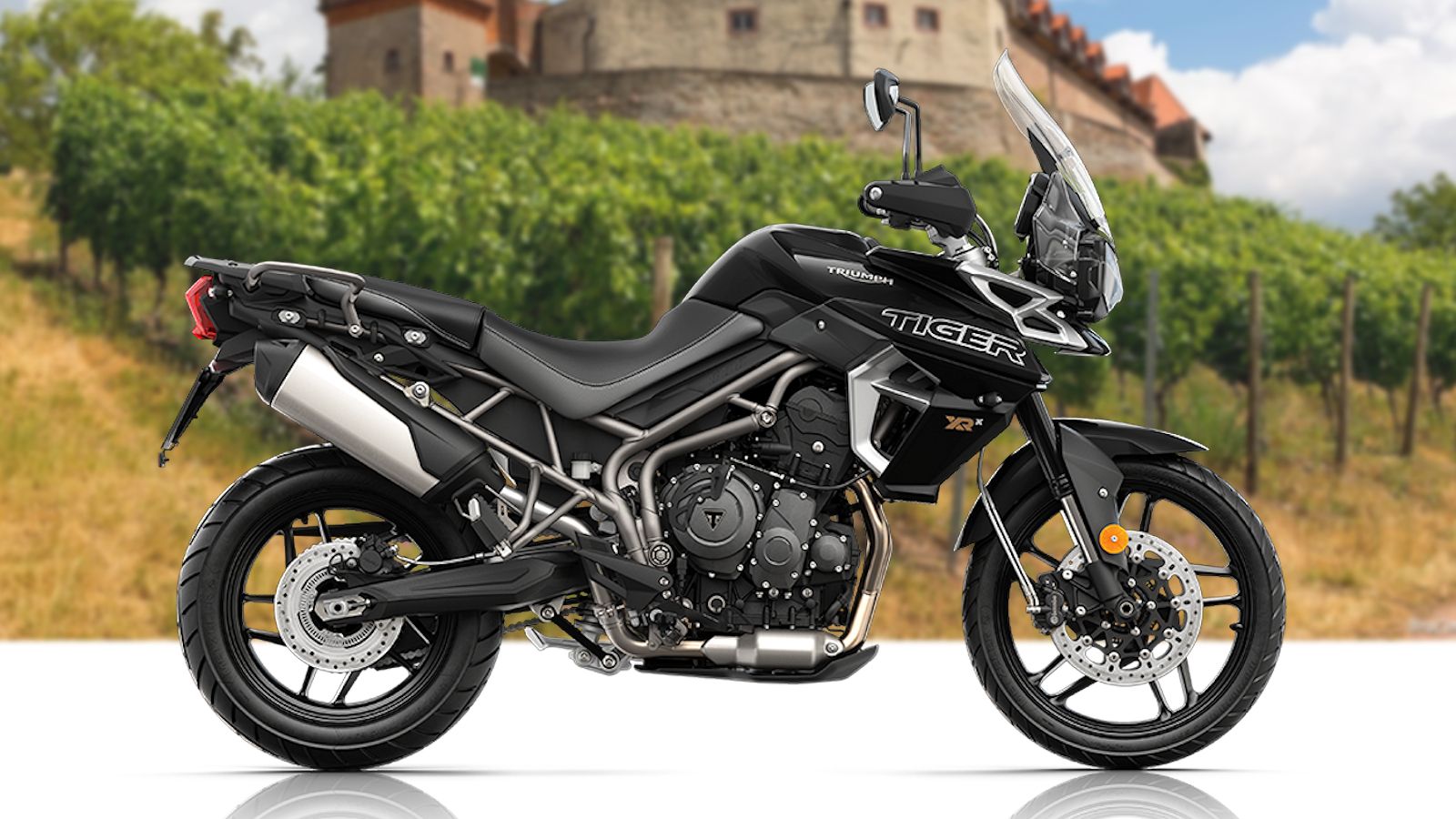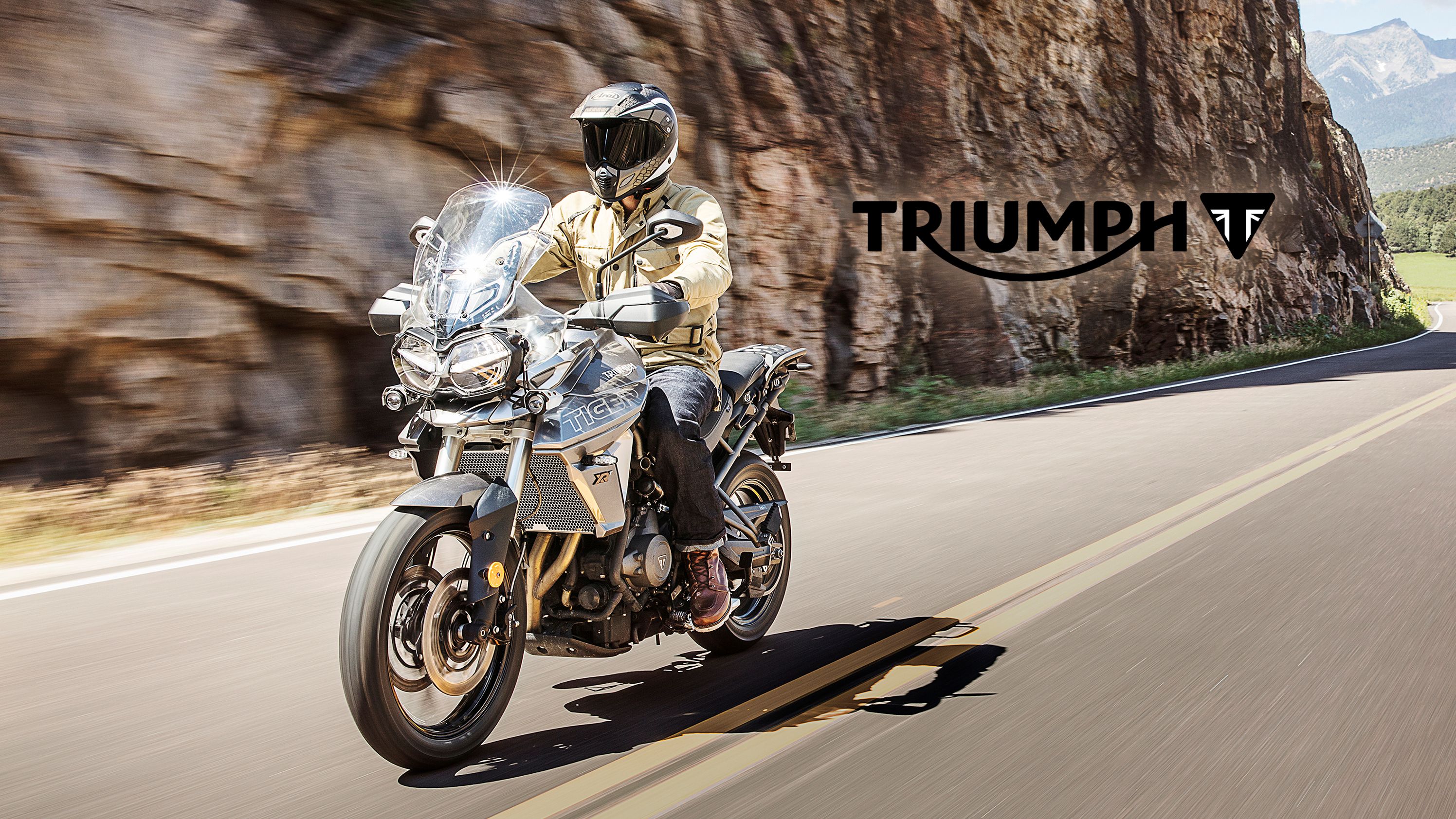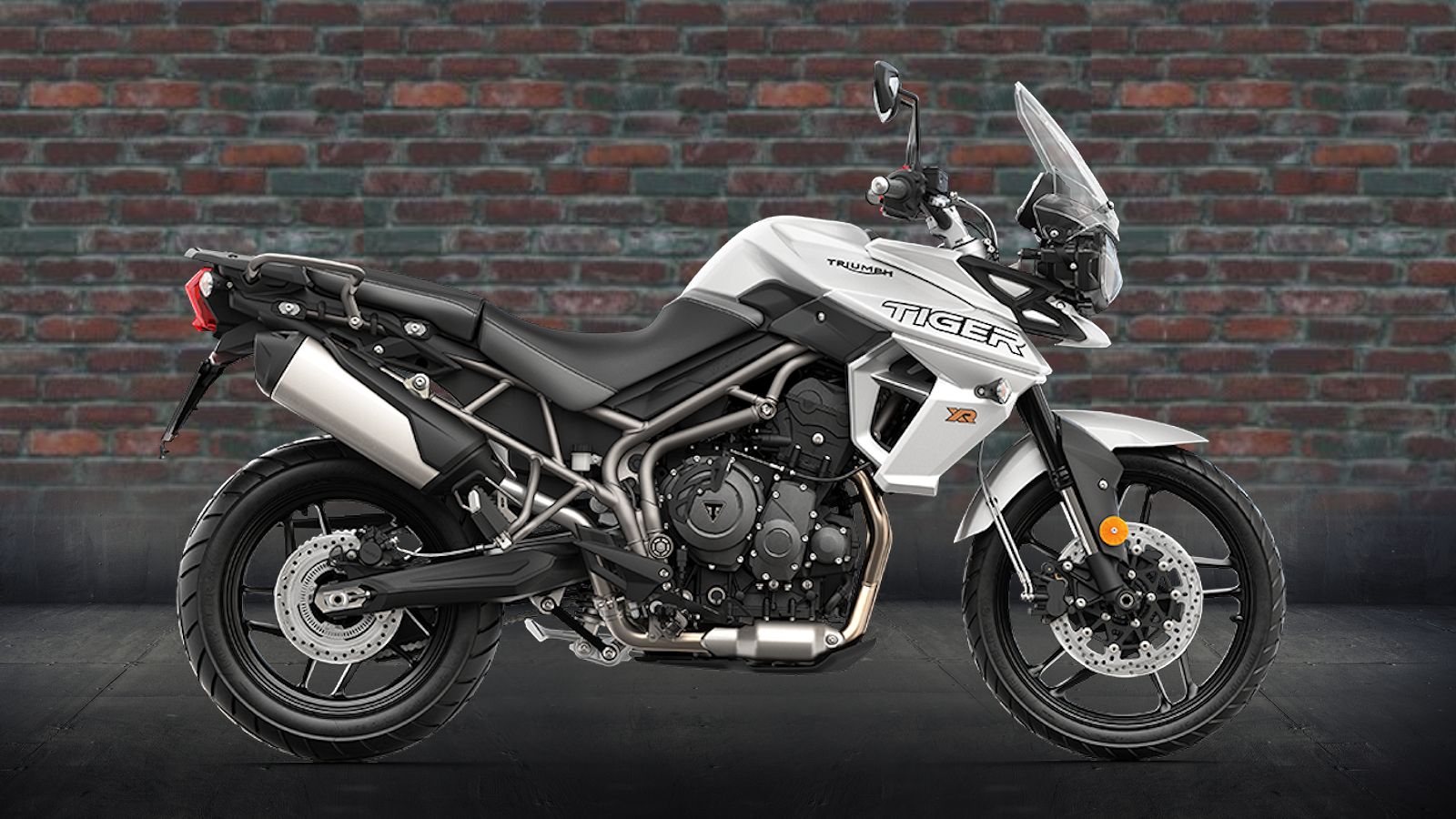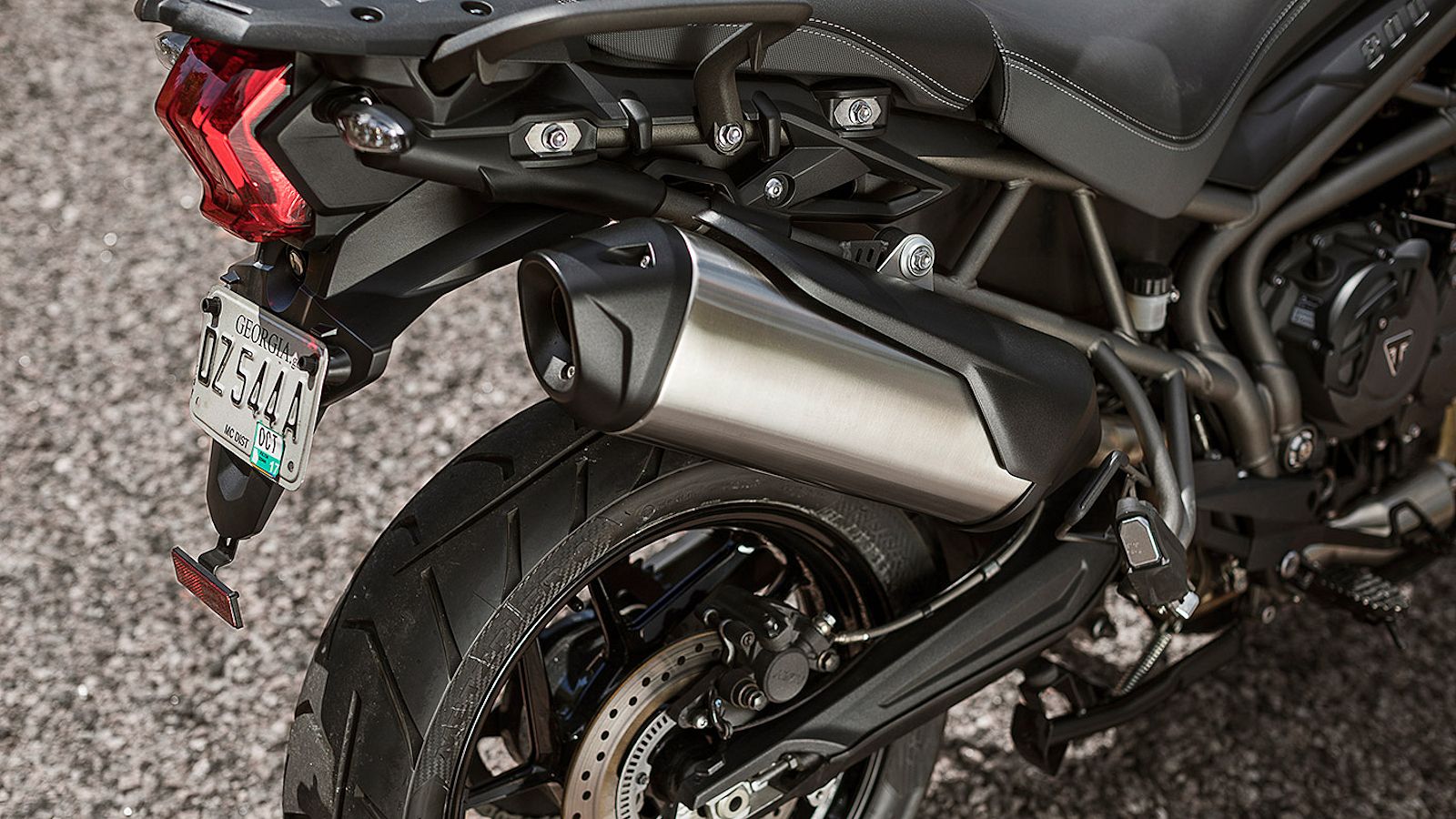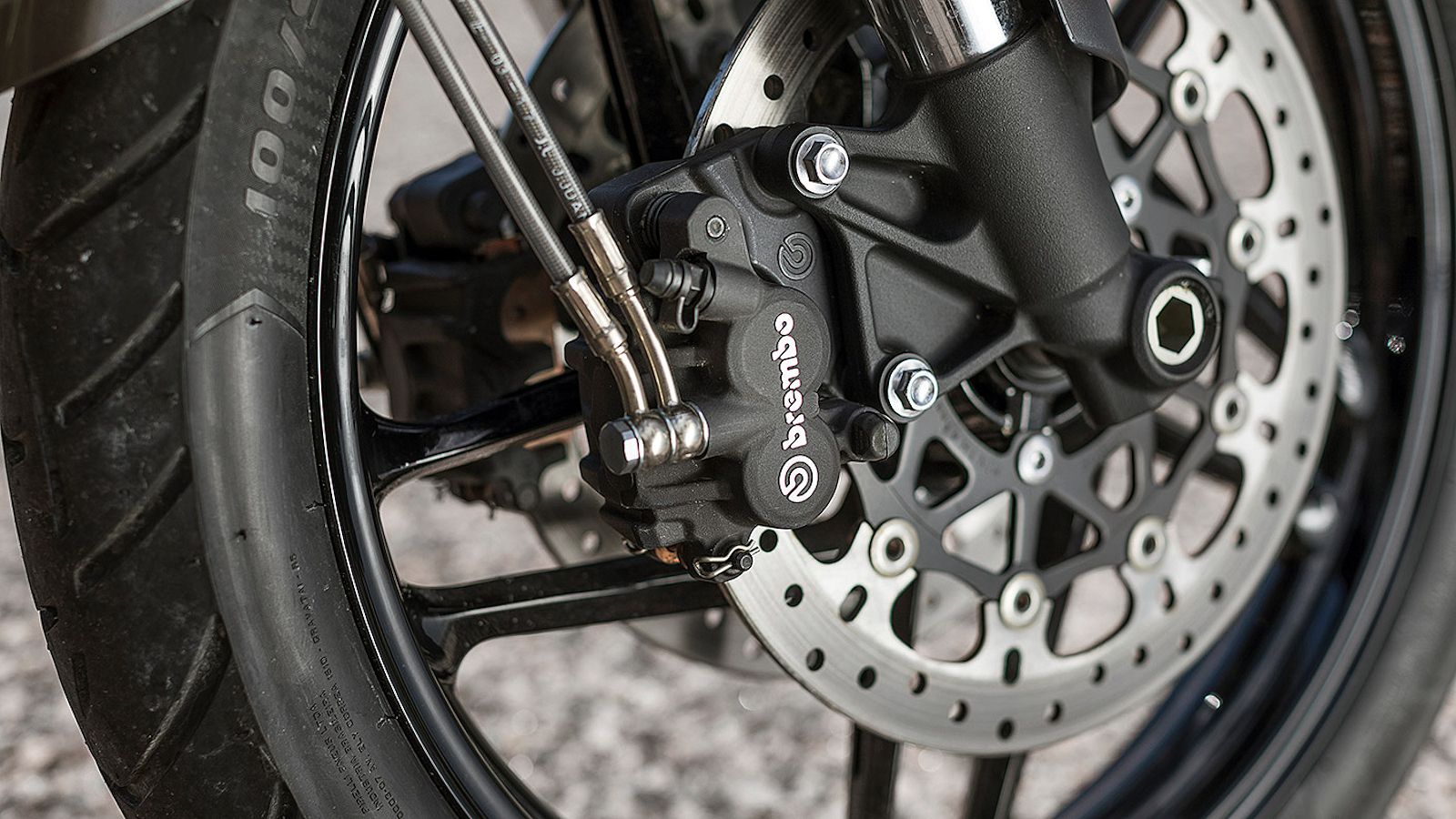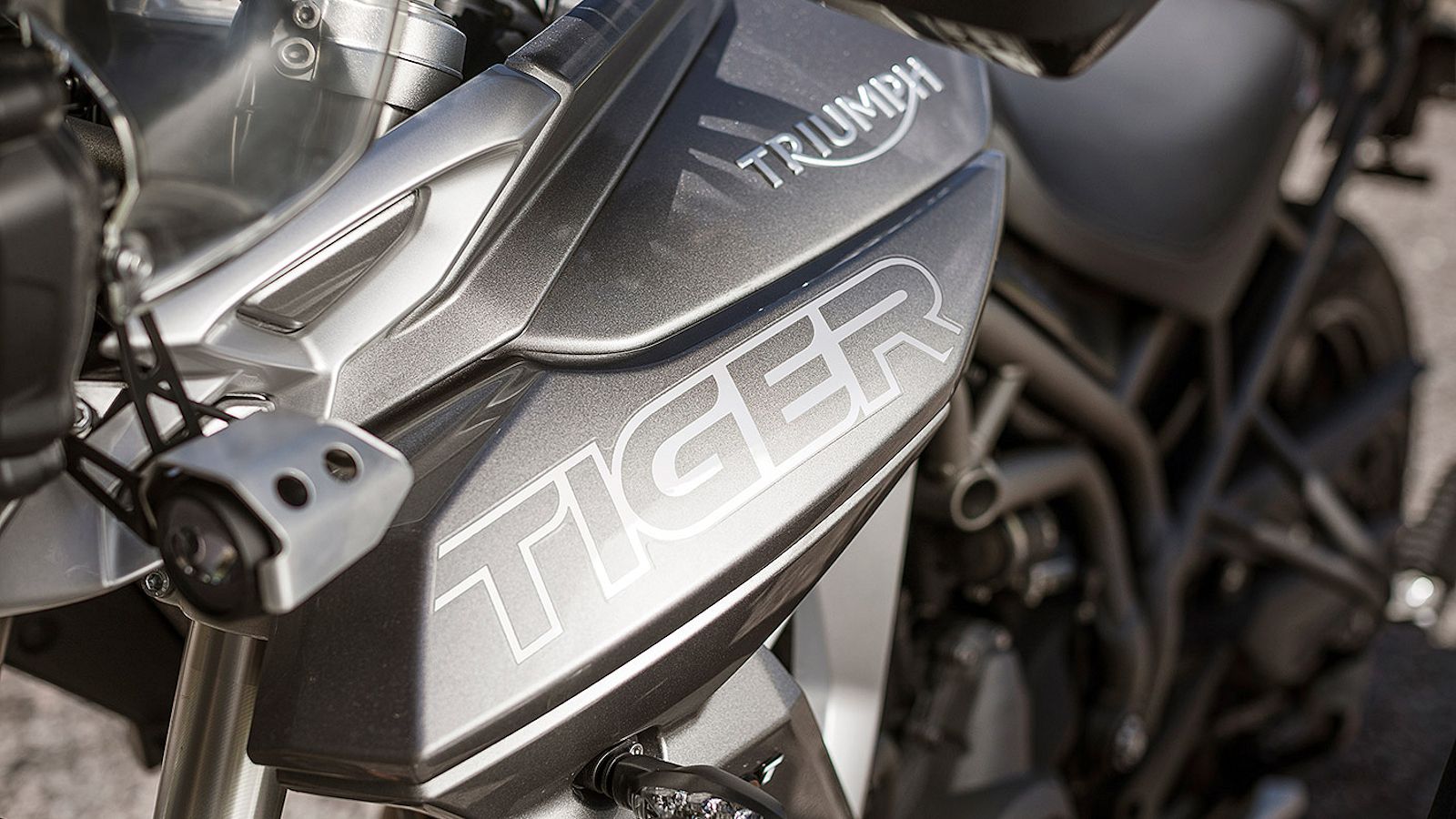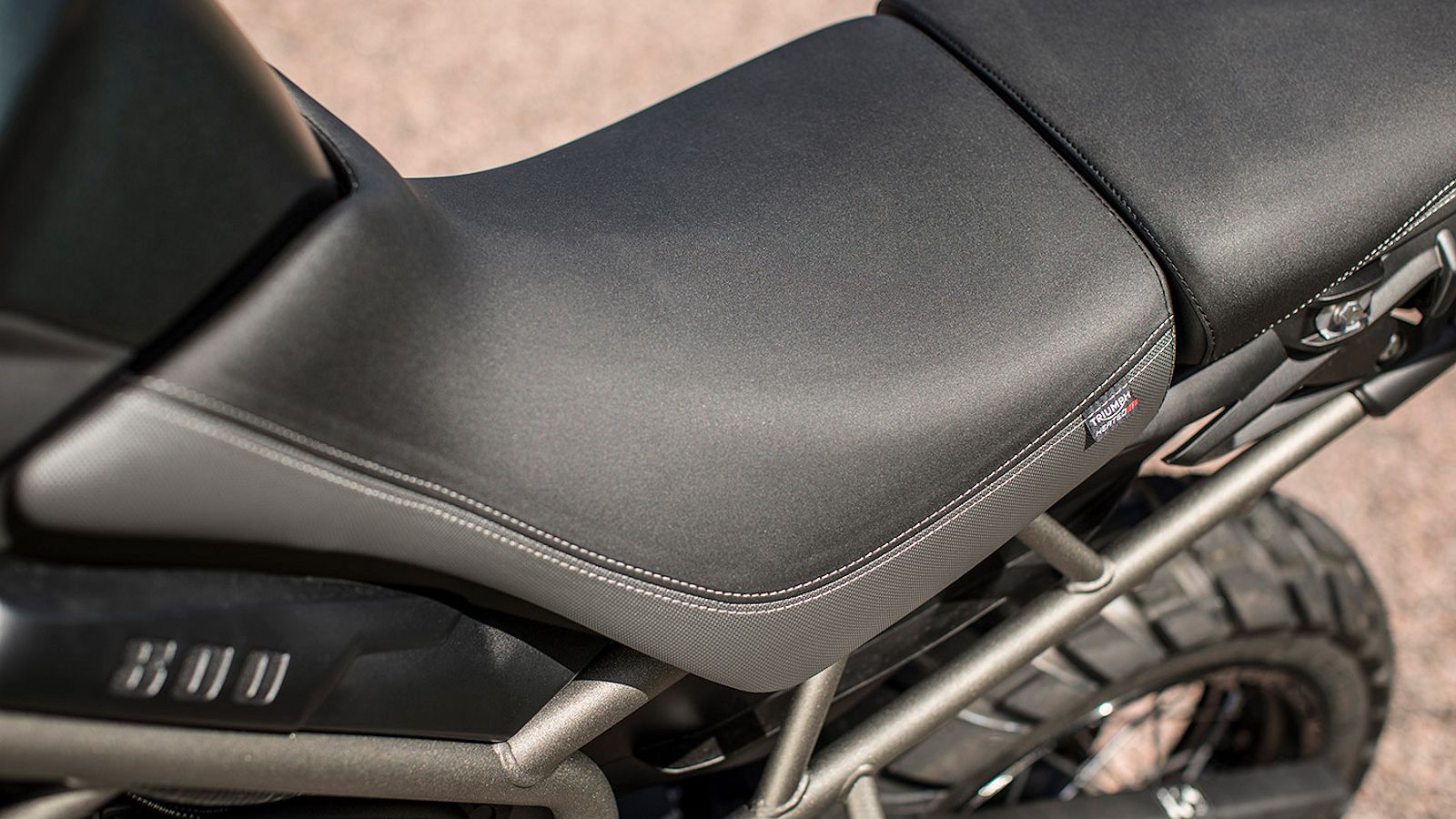Triumph gave its venerable Tiger range an update for 2018 and an upgrade with the all-new Tiger 800 XRx and its vertically-challenged sibling, the XRx Low. These two reside on the second tier of the XR range with numerous features that the base model misses out on such as Riding Modes, DRLs and full-color TFT display to name a few. A next-gen engine churns out 94 horsepower and 58 pound-feet of torque for greater performance than its predecessor, with the electronic assistance you need to keep it all under control. Built as a street-centric adventure bike, the XRx siblings can double as outstanding commuters. Join me while I check out the details on this dynamic duo.
Continue reading for my review of the Triumph Tiger 800 XRx.
2018 Triumph Tiger 800 XRx
- Make: Array
- Model: 2018 Triumph Tiger 800 XRx
- Engine/Motor: inline-3
- [do not use] Vehicle Model: Array
Design
The XR family shares a good deal of DNA with the dirt-tacular XC brothers to leave the tires and fairing design as the chief visual differences. Up front, the XRx models lead off with a fender that contains the fling coming off the front wheel and fender supports that double as fork-tube shields to keep road grime from sticking to the inner tubes of the inverted front forks where it would then chew the fork seals up. Unlike the XC's fairing, the XR models run with a blunt entry up front rather than the pointy bird's beak on the off-road model.
Dual LED headlights sport bright daytime running lights and dominate what little is left of the front fairing, and up top, a scooped-and-vented windshield punches a hole in the wind for a nice, low-turbulence rider's pocket. Inside the adjustable windshield, the five-inch, Thin Film Transistor LCD screen replaces the instrument cluster from the base-model XR with a full-color screen and a five-way joystick that lets you quickly navigate through the various possibilities. Heated handgrips hide from the wind behind the stock handguards for what is undoubtedly a pleasant riding experience on off-season rides.
A five-gallon fuel tank gives the XR models the customary fuel-tank hump and plenty of range, and though it's got a top-heavy look due to the flange at the top of the tank, it tapers down nicely at the waist. Not only does this give your thighs a break when you dab, but it forms a nice pocket for the rider's legs to tuck in out of the slipstream.
Saddle height is adjustable on both models, as are the handlebar-, clutch- and brake-lever positions, so you have quite a bit of flexibility in the size and shape of the rider's triangle. The XRx sports a seat that can fall between 32.6- and 31.8-inches tall, while the low varies between 30.7- and 29.9- inches off the ground for a bit of flexibility in the rider's triangle.
An upswept subframe lofts the passenger somewhat with a substantial set of J.C. handles and frame-mount, fold-up footpegs to complete the pillion appointments. An LED taillight finishes off the rear end with a hang-down plateholder that doubles as a mudguard, and on the right side, an upswept muffler keeps itself high-and-tight and well clear of terrain.
Chassis
Steel tubing makes up the members of the well-visible Trellis frame, and the system relies on the engine to complete the circuit and act as a sort of keystone upon which the strength of the whole depends. Aluminum is the material of choice for the unsprung components in order to keep weight down with a cast, twin-sided swingarm and 10-spoke wheels to finish out the rolling chassis. Not only does this contribute to a lower overall weight, but the lower unsprung mass allows for quicker reversals of motion in the suspension, a more supple ride and greater contact-patch integrity.
While the XRx sports 7 inches of travel up front and 6.6 out back, the Low sacrifices travel for seat height with 5.9 and 5.5 inches of travel for front and rear, respectively, but that's still plenty for cruising on civilized roads. The Showa components are pretty bottom shelf, at least in the sense that they are plain vanilla with naught but the minimal adjustability in the rear preload adjuster. Somehow, I expected a bit more from Trumpet at this price point, but there it is. Dual 305 mm discs and new, twin-pot Brembo calipers slow the front wheel with a Nissin anchor and 255 mm disc out back and a switchable ABS so you can take or leave that safety net as you please.
|
Frame: |
Tubular steel trellis frame |
|
Swingarm: |
Twin-sided, cast aluminum alloy |
|
Rake: |
23.8 º |
|
Trail: |
3.41 in (XRx Low: 3.39 in) |
|
Front Wheel: |
Cast aluminum alloy 10-spoke 19 x 2.5 in |
|
Rear Wheel: |
Cast aluminum alloy 10-spoke 17 x 4.25 in |
|
Front Tire: |
100/90-19 |
|
Rear Tire: |
150/70 R17 |
|
Front Suspension: |
Showa 43 mm upside down forks, 7.09 in travel (XRx Low: 5.51 in ) |
|
Rear Suspension: |
Showa monoshock with hydraulically adjustable preload, 6.69 in rear wheel travel (XRx Low: 5.9 in) |
|
Front Brakes: |
Twin 305 mm floating discs, Brembo 2piston sliding calipers, switchable ABS |
|
Rear Brakes: |
Single 255 mm disc, Nissin single piston sliding caliper, switchable ABS |
Drivetrain
Like a gem in a setting, the new-gen, inline triple rides prominently displayed with little in the way of frameage or body panels to hide it. The engine, and its controls, see most of the fancy electronic gadgetry on the bike, but first, let's take a look at the mundane stuff.
It runs a 74 mm bore and 61.9 mm stroke with an 800 cc total displacement and 11.3-to-1 compression ratio. Dual over-head cams time the 12-valve system, and an all-stainless exhaust system carries away the waste gasses with a 3-into-1 header out in front where the incoming air can keep it cool. Above the pipes, and up high under the steering head, the radiator is fairly inconspicuous and placed well out of harm's way. As usual with triples, power comes on high up in the rpm range with 58 pounds o' grunt that develop at 8,050 rpm, but you don't get the full 95 horsepower til you wind it up to a lofty 9,500 rpm.
Now for the promised fandanglery; the factory sends the XRx models out the door with a riding mode feature that comes with four settings -- Road, Off-Road, Rain, and Sport -- for tailored power-delivery characteristics and a four-way personality. On top of that, Trumpet adds a traction-control system to monitor wheel speeds and intervene as necessary to prevent loss of traction due to an over-enthusiastic right wrist. And there you have it; ample power and the means to tailor it to your preferences and the prevailing conditions.
|
Engine: |
Liquid-cooled, 12 valve, DOHC, in-line 3-cylinder |
|
Displacement: |
800 cc |
|
Bore x Stroke : |
74.05 mm x 61.9 mm |
|
Compression: |
11.3:1 |
|
Max Power EC: |
95 hp @ 9,500 rpm |
|
Max Torque EC: |
58 ft-lbs @ 8,050 rpm |
|
System: |
Multipoint sequential electronic fuel injection |
|
Exhaust: |
Stainless steel 3 into 1 header system, side mounted stainless steel muffler |
|
Final Drive: |
O-ring chain |
|
Clutch: |
Wet, multi-plate |
|
Gearbox: |
6-speed |
Price
Whether you want the full-height XRx or the Low, you can expect to pay the same price. For 2018, the all-new lineup rolls for $13,650 with color choices available for $250 more.
|
Instrument Display and Functions: |
TFT multifunctional instrument pack with digital speedometer, trip computer, digital tachometer, gear position indicator, fuel gauge, service indicator, ambient temperature, clock and four rider modes (Road/Offroad/Sport/Track) |
|
Colors: |
Jet Black, Crystal White, Matt Jet Black, Lucrene Blue |
|
Price: |
$13,650, Colors: $13,900 |
Competitor
No doubt, the use of on-road adventure bikes as super-commuters is definitely a thing, and there's no shortage of big-name competitors from which I could choose, but the Kawasaki Versys seemed a likely candidate since it offers a compromise between technology and off-the-lot touring capacity. In the looks department, you could certainly do worse than the Versys that manages to introduce a bit of flow and grace the Tiger doesn't quite match. The sweep of the tank, and fairing that is more than just a mount for the headlights and windshield gives the Versys a more finished look, as do the stock panniers.
A lighter, twin-spar aluminum frame supports the Versys versus the steel skeleton of the Tiger, and Kawi gets another edge with some ride-quality control in the form of adjustable preload and rebound-damping front and rear. ABS comes stock, but unlike Triumph's antilocks, the Versys' ABS can't be toggled off.
Instead of three barrels, Kawi went with four and packed in more cubeage to boot for a total of 1,043 cc. As you might expect, this pays dividends on the dyno with 117 horsepower and 75 pounds o' grunt against 95/58. In another trade off, the Kawi runs with no traction control or rider modes, so you get more power but it's raw and unfiltered.
Kawi gets a minor victory at the checkout with its $12,999 tag against the $13,650 Tiger. Though it will take a few coins to match the bags on the Versys, there is no way to make the tech on the Kawi match that of the Trumpet, and most will consider the price difference worth it to unlock the goodies Triumph brings to the table.
He Said
“Though maybe not as pretty as the Versys, the British charm has a value all its own. Loving the stock heated grips and guards, and I reckon all it will take is some bags and/or a top case to really make this a practical urban commuter.”
She Said
My wife and fellow motorcycle writer, Allyn Hinton, says, “This XRx has quite a bit of added yummy-goodness over the base model. The TFT instrument display is a big upgrade over the old digital displays, which I always had a hard time seeing at a glance. The TFT display is very clear and much more old-lady eyesight friendly. Upgrades over the base model include updated cruise control, rider modes, Brembo front brakes, LED running lights and more, not to mention the low-seat option which makes it more approachable for height-challenged folks like me. These bikes were a take-off of the original Street Triple back in 2010 or thereabouts, and they remain a very nice commuter or a weekender. They have plenty of usable power and comfortable seating.”
Specifications
|
Engine & Drivetrain: |
|
|
Engine: |
Liquid-cooled, 12 valve, DOHC, in-line 3-cylinder |
|
Displacement: |
800 cc |
|
Bore x Stroke : |
74.05 mm x 61.9 mm |
|
Compression: |
11.3:1 |
|
Max Power EC: |
95 hp @ 9,500 rpm |
|
Max Torque EC: |
58 ft-lbs @ 8,050 rpm |
|
System: |
Multipoint sequential electronic fuel injection |
|
Exhaust: |
Stainless steel 3 into 1 header system, side mounted stainless steel muffler |
|
Final Drive: |
O-ring chain |
|
Clutch: |
Wet, multi-plate |
|
Gearbox: |
6-speed |
|
Chassis: |
|
|
Frame: |
Tubular steel trellis frame |
|
Swingarm: |
Twin-sided, cast aluminum alloy |
|
Rake: |
23.8 º |
|
Trail: |
3.41 in (XRx Low: 3.39 in) |
|
Front Wheel: |
Cast aluminum alloy 10-spoke 19 x 2.5 in |
|
Rear Wheel: |
Cast aluminum alloy 10-spoke 17 x 4.25 in |
|
Front Tire: |
100/90-19 |
|
Rear Tire: |
150/70 R17 |
|
Front Suspension: |
Showa 43 mm upside down forks, 7.09 in travel (XRx Low: 5.51 in ) |
|
Rear Suspension: |
Showa monoshock with hydraulically adjustable preload, 6.69 in rear wheel travel (XRx Low: 5.9 in) |
|
Front Brakes: |
Twin 305 mm floating discs, Brembo 2piston sliding calipers, switchable ABS |
|
Rear Brakes: |
Single 255 mm disc, Nissin single piston sliding caliper, switchable ABS |
|
Dimensions & Capacities: |
|
|
Width Handlebars: |
31.3 in |
|
Height Without Mirror: |
53.15 in (XRx Low: 51.18 in) |
|
Seat Height: |
31.89 - 32.68 in (XRx Low: 29.9 – 30.7 in) |
|
Wheelbase: |
60.24 in |
|
Dry Weight: |
441 Lbs (XRx Low: 439 lbs) |
|
Tank Capacity: |
5 Gal. |
|
Details: |
|
|
Instrument Display and Functions: |
TFT multifunctional instrument pack with digital speedometer, trip computer, digital tachometer, gear position indicator, fuel gage, service indicator, ambient temperature, clock and four rider modes (Road/Offroad/Sport/Track) |
|
Colors: |
Jet Black, Crystal White, Matt Jet Black, Lucrene Blue |
|
Price: |
$13,650, Colors: $13,900 |
References
Kawasaki Versys
See our review of the Kawasaki Versys.

